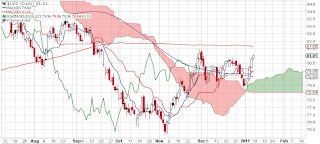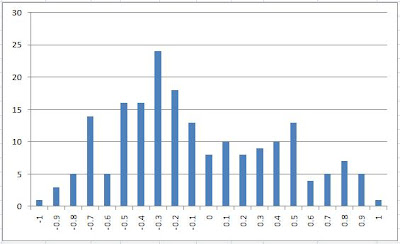1) Seek to own stocks with unmet demand, and sell when that demand has been met. Seek to short stocks with unmet supply, and cover when that supply has been met.
2) Without a marketwide appetite for risk, company signals go mostly unexploited.
3) Fundamental investing assumes too much ego, passive indexing too little…we prefer an approach with sound principles but no crystal ball.
4) Seek to
invest only when belief is so anchored that all thoughts of alternative scenarios have been abandoned.
5) Seek not to guess when a setup may occur, but
allow it to unfold and then act before investors realize the magnitude of the setup.
6) Accepting risk may cause losses, but accepting unfunded liabilities and negative skew can bankrupt us.
7) Use models not to predict, but to create a range of possible outcomes for which we can plan.

Superior skill
absolutely exists, but as an added bonus to harnessing the inherent power of capital market returns.
9) Differentiate between managers in the investment profession seeking to maximize long-term returns, vs. those in the investment
business seeking to generate a larger fee base.(Swenson)
10) Asset allocation theories such as MPT contain many worthy ideas, but input frequency and lookback period are critical to capturing the true characteristics of dynamic measures such as correlation and volatility.
11) Owning “value” by itself is not the goal; we want to own something that will be highly desired by a crowd of next frame buyers at a future data and higher price. This means being early adopters in stocks that mutual funds will “need” to own in 1-4 quarters, and asset classes that pension funds will “need” to own in 1-4 years. We can then meet their needs by selling them our positions.
12) A long-term earnings growth line of 6% has held up as the line of truth, with profit margin oscillations causing the shorter fits and spurts.(Hussman)
13) Markets follow cycles based on the perceptions and actions of its players, and one can gain alpha by using these cycles to manage risk and reward.
14) Markets SEEK efficiency, buy offer tremendous opportunities while traveling from inefficiency to efficiency.
15) Most measures
mean revert, but some trend…distinguish between the two to avoid incorrect generalizations.
16) Both people
and machines have flaws, so use the best attributes of each for peak performance.
17) Forecasting is necessary but should be timid in nature, while action is not always necessary but should be
BOLD on the occasions when conditions dictate it.
18) Risk management is made more complete by searching for information that
differs from your analysis rather than by that which confirms it.
19) Successful practitioners turn mistakes into assets by generating learning experiences and continuous improvement.
20) Remember to distinguish between clues that are necessary, vs. a complete picture revealing a group of necessary
AND sufficient measures.
21) Markets can be generally explained 95% of the time, but extreme events happen much more than a bell curve would indicate…using options guarantees that we’ll survive fat tails
and grab positive skew.
22) Changes begin internally and work outward, so be constantly aware of the “market of stocks”.
23) We are certain we DON’T know what will happen, so the best approach is to figure out what WON’T happen and blueprint accordingly.
24) Diversification reduces risk
most of the time, but we assume all assets are linked and eventually correlate.
25) It is critical to match ideas with the proper time frame to reduce Trend Relativity Errors…use those errors by others to enhance our alignment with the trend or signal.
26) When studying an asset, we first need to determine whether it is experiencing a trending market(positive feedback loop) or a rangebound one(negative feedback loop).
27) To gain an edge in an ultracompetitive landscape, we must wait until others reveal their hand or incorrectly commit.
28) It is critical to have both a brain and a gut; the ability to find an edge, and the fortitude to trade it aggressively.(Steenbarger)
29) Profitable opportunities are best entered in the earliest stage of latent power being converted to energy. Too soon is a waste of capital, too late involves too much risk.
30) We must have the open mind of an artist and the hard-nosed skepticism of a scientist.(Steenbarger)
31) Virtually all long-term strategies are positioned to simply ride the tailwinds of rising prices. It is imperative to have methods to protect us from both headwinds
and crosswinds to avert disaster.(Easterling)
32) When a rule is adopted, it marks the beginning not the end of the process…execution is key.
33) While anecdotal information can be helpful, they are gray areas of subjectivity that can’t compare to the objectivity of measuring performance. Anyone with an open mind can create a persuasive case for
ANYscenario, so beware mindtraps.(Tharp)
34) Treat volatility as a psychological risk to be managed into an ally, not as a financial measure of risk to obsess over.
These are all copies or strong imitations of what others have stated elsewhere…there are no market sentiments that have not been expressed
somewhere. These are just the ones that have struck a chord with me, and I’ve been able to absorb as my own. Most reading this already have such a list, if not maybe that’s a good New Year’s weekend goal. For me, 27, 32, and 34 are hardest to execute and thereby need reminders. After re-reading this, my goal for 2011 is to write the same post in half the words next Dec!


















